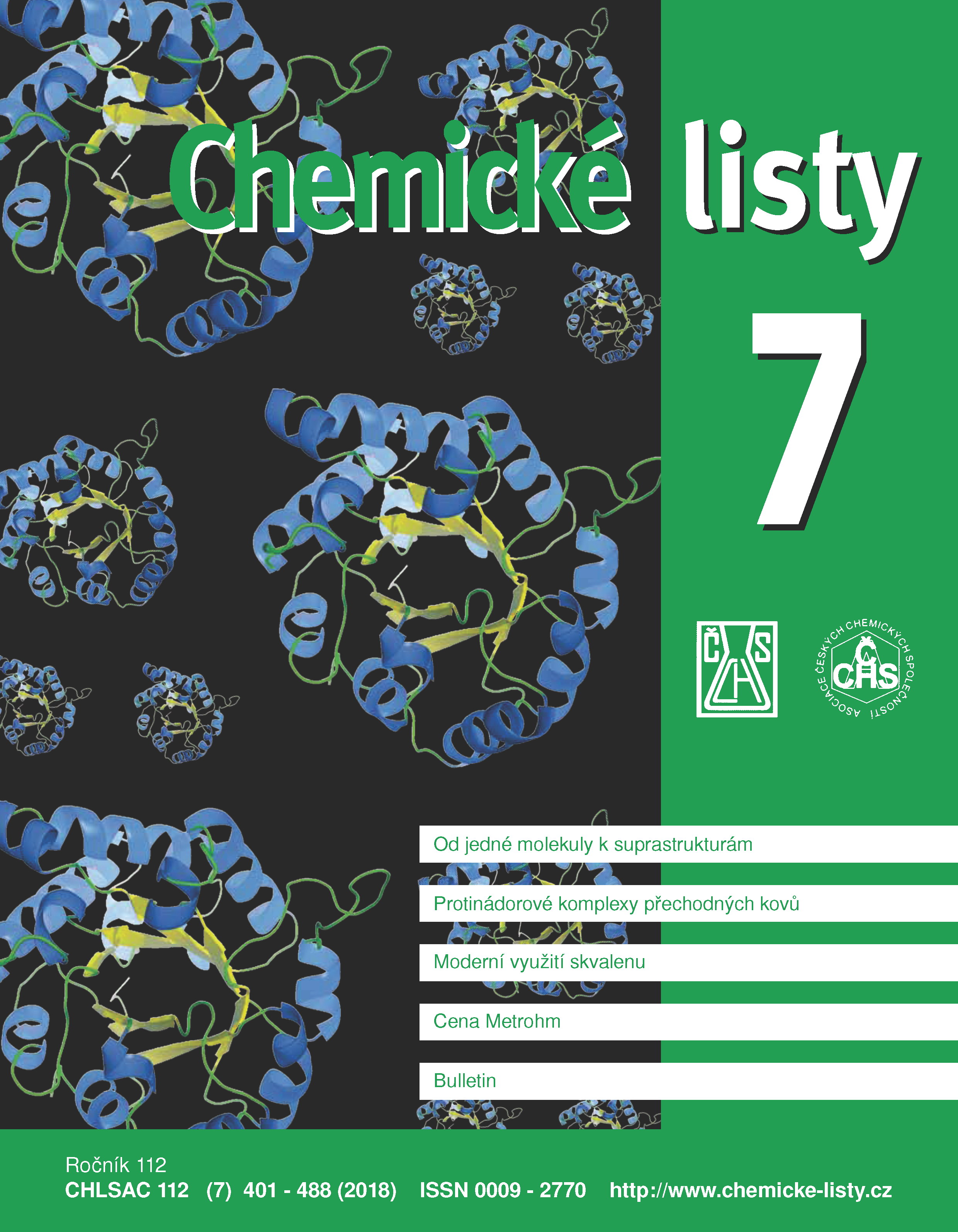Protinádorově účinné komplexy přechodných kovů: historie a současnost
Klíčová slova:
protinádorová aktivita, koordinační sloučenina, komplex, přechodný kov, mechanismus účinkuAbstrakt
In this overview, a short history and current state of the art regarding selected anticancer effective transition metal complexes are briefly described. In view of the fact that this text represents a part of experimental work for which Assoc. Prof. Pavel Štarha, Ph.D. was awarded the Alfred Bader Prize for Bioinorganic and Bioorganic chemistry by the Czech Chemical Society in 2017, the report is focused on the results realized mostly at the Division of Biologically Active Complexes and Molecular Magnets of the Regional Centre of Advanced Technologies and Materials of Palacký University in Olomouc. Some examples of highly cytotoxic complexes of platinum, gold, ruthenium, iridium and palladium are put into a broader context of their relative activities as compared to the generally accepted standard, i.e. cisplatin. Some of the presented compounds can be considered as pharmacologically prospective ones, which deserve to be further deeply evaluated in direction of future possible preclinical and clinical studies. Novelty and potential applicability of some of the developed complexes have been also supported by granting of several national and European patents.





